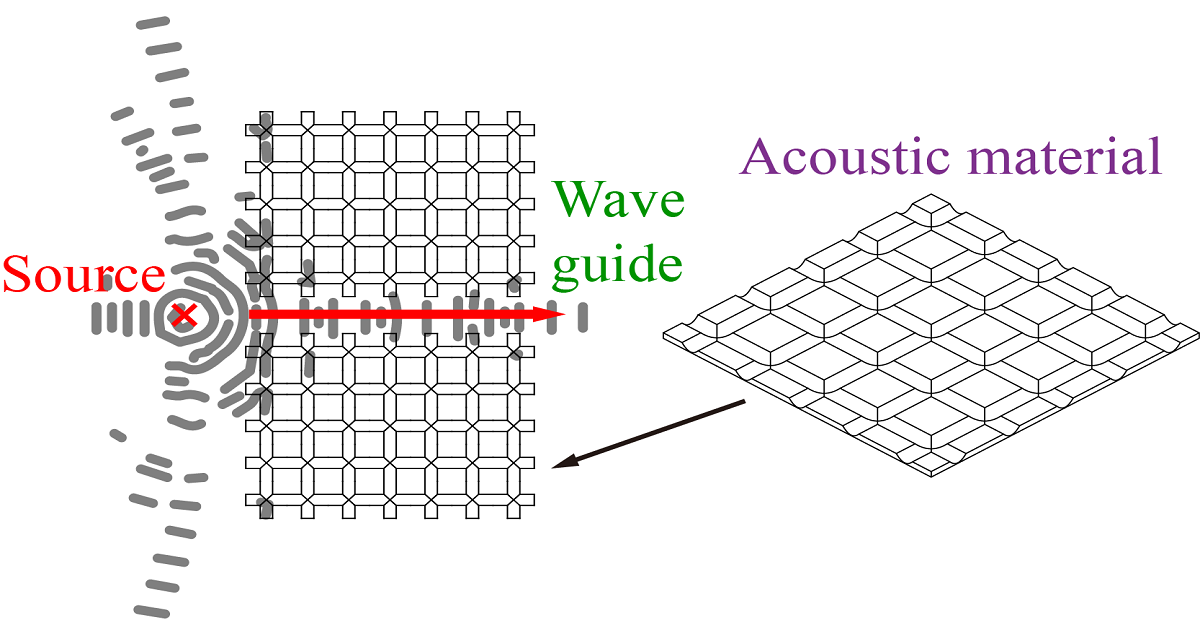Advances in Emerging Acoustic Materials
A special issue of Materials (ISSN 1996-1944). This special issue belongs to the section "Advanced Composites".
Deadline for manuscript submissions: closed (20 October 2023) | Viewed by 4738

Special Issue Editors
Interests: acoustic black holes; vibroacoustic control; sound absorption; acoustic metamaterials; phononic crystals; structural dynamics; vibration energy harvesting; Rayleigh-Ritz method, statistical energy analysis
Interests: noise and vibration reduction; acoustic metamaterial; underwater absorption/insulation; composite porous metastructure
Special Issues, Collections and Topics in MDPI journals
Special Issue Information
Dear Colleagues,
In recent years, noise pollution has become a significant global problem and, unfortunately, conventional acoustic materials cannot offer substantial improvements in its reduction. Presently, the rapid development of emerging acoustic materials, exemplified by acoustic metamaterials, acoustic black holes, and phononic crystals, are providing new solutions for controlling sound waves and have huge potential for mitigating noise propagation, drawing the attention of researchers worldwide. These technologies are often both lightweight and compact and capable of reducing noise from low to high frequencies. Recent progress has illustrated that acoustic metamaterials effectively control sound waves, and optimizing their structure enables functionality based on new physical phenomena.
This Special Issue aims to prompt the development of emerging acoustic materials, the underlying physical mechanism, application scenarios, and emerging research trends for both passive and active noise reduction metamaterials. The articles presented in this Special Issue will cover various topics ranging from, but not limited to, the following topics:
- Acoustic black holes for vibration reduction;
- New designs for sound absorption and insulation;
- Acoustic lenses and novel refractive devices for energy harvesting;
- Advances in porous materials;
- Digital and programmable acoustic metamaterials;
- Optimization design for phononic crystals;
- Deep learning-based approaches in phononics;
- Nanophononics and integrated systems;
- Any other topics or approaches not covered in the above list but addressing the same goal.
Dr. Jie Deng
Dr. Nansha Gao
Prof. Dr. Long Bai
Guest Editors
Manuscript Submission Information
Manuscripts should be submitted online at www.mdpi.com by registering and logging in to this website. Once you are registered, click here to go to the submission form. Manuscripts can be submitted until the deadline. All submissions that pass pre-check are peer-reviewed. Accepted papers will be published continuously in the journal (as soon as accepted) and will be listed together on the special issue website. Research articles, review articles as well as short communications are invited. For planned papers, a title and short abstract (about 100 words) can be sent to the Editorial Office for announcement on this website.
Submitted manuscripts should not have been published previously, nor be under consideration for publication elsewhere (except conference proceedings papers). All manuscripts are thoroughly refereed through a single-blind peer-review process. A guide for authors and other relevant information for submission of manuscripts is available on the Instructions for Authors page. Materials is an international peer-reviewed open access semimonthly journal published by MDPI.
Please visit the Instructions for Authors page before submitting a manuscript. The Article Processing Charge (APC) for publication in this open access journal is 2600 CHF (Swiss Francs). Submitted papers should be well formatted and use good English. Authors may use MDPI's English editing service prior to publication or during author revisions.
Keywords
- acoustic black holes
- vibroacoustic control
- sound absorption
- acoustic metamaterials
- phononic crystals
- bandgaps








